Marcia Thornton Jones's Blog, page 3
August 23, 2025
Reflections on Imagination: Smack Dab in the Imagination by Dia Calhoun
So, to…create anything at all, whether it’s a stone tool or a spaceship, you have to be able to imagine it. You have to see it first. You have to be able to visualize it and have an idea about it.
Doesn’t this miss a step or two? Did Einstein visualize relativity before creating it? Perhaps we begin with a problem we need to solve, or an intention to do something, and then play with possibilities. When I start writing a poem, I do sometimes have an idea, but I don’t know what the poem will end up being. (This is a good approach for poets who follow the mantra: no surprise for the writer no surprise for the reader.) Even when writing a novel, I may have an arc, or a premise in the beginning stages. But when I’m stuck in a scene where I don’t know what happens next, I have to play with possibilities--what if, what if. Will this work? Will that work? Imagination is process.
Now, maybe Marchiano’s thought is more relevant for creating physical objects like stone tools and spaceships Intention: we want to go to outer space. Problem: we have to figure out how to get there. Imaginative projection: maybe we need something like a ship that crosses oceans. Creation: A long, long process where our imaginations play with “what ifs” in order to physically create that spaceship that got us to the moon.
(Interesting side note: We didn’t name airplanes airships, even though they cross big, empty spaces. Perhaps the word ship is more evocative of the vehicles needed to cross the vast unknown, like oceans and outer space and death—the Charon ferrying souls over the River Styx.)
Let me end by saying that the podcast episode is excellent.
August 20, 2025
Getting Excited About Learning with New Stem Releases Great for Classroom Use

This pair of STEM-friendly books would make perfect classroom additions for the upcoming schoolyear.

The Curiosity Chronicles is actually a choose-you-own-adventure (which, as a child of the '80s, I absolutely love). Students make choices that determine the course of the book; wrong answers sometimes provide the most interesting lessons. The one would make such a great read-aloud. I can imagine students voting on the course of the book, debating each answer along the way...
Snag a copy of The Curiosity Chronicles
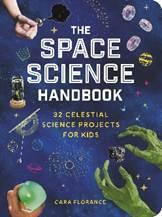
The Space Science Handbook is chock-full of experiments. Kids can crush cans with atmospheric pressure, make magnetic slime, create batteries from potatoes, and explore everything from extraterrestrial life to space technology. These 32 projects would be so much fun to bring into the classroom.
Snag a copy of The Space Science Handbook
Happy back-to-school season, everyone!
August 19, 2025
Interview with Katherine Marsh, Author of The Gods' Revenge

Welcometo Smack Dab, Katherine! Please tell us about The Gods' Revenge and TheMyth of Monsters series.
The Mythof Monsters series, which starts with Medusa, and continues with TheGods’ Revenge, tells the story of the descendants of the Greek mythologicalmonsters as they navigate life at a boarding school in Venice run by theOlympian gods. I like to describe it as Percy Jackson meets Wednesdaywith a feminist twist.
I'malways interested in retellings of classic stories, and how authors bringclassic tales into contemporary life. Ava, your main character in the series,is a descendant of Medusa. What drew you to her story?
As a childreader of myths, I was always bothered by the fact that so many of theso-called monsters were women. As the mother of a daughter, I wanted to givevoice to these maligned female characters while putting girls at the center ofan action series and Medusa always seemed like one of the most compelling. Sheis consistently described as angry and ugly, as if there is a naturalequivalence for women between the two. In some versions of the myth, she isalso portrayed as a victim, yet her name means “guardian” or “protector” whichhints at great agency. I wanted to explore these contradictions and qualities,which reflect the struggles of female experience.
In thefirst book, Ava begins her schooling at the Accademia Del Forte. There, she’ssurrounded by other students who are also descendants of mythological monsters.They’re all learning to harness their powers, and there’s something reallywonderful at first about a school where everyone has magical abilities andacceptance seems guaranteed. But as Ava learns, it's too good to be true. Howdoes the Academy's dark underside evolve in book two, particularly with changesinvolving the headmaster?
I don’tthink I’m spoiling anything by revealing that after the events in book one, theOlympian gods aren’t pleased with Ava and her friends. In book two, they’relooking for ways to undermine them. The new headmaster, Perseus, brings a wholenew level of toxic masculinity to the school, opening the Bro Bar, a snack barthat celebrates hero-core, and banning girls’ sports. I want to emphasize thatthe story isn’t dark but has a lot of humor to it. In fact, this book is evenfunnier and more playful than the first.
Onetheme that emerged in Medusa was "with great power comes greatresponsibility,” in that the original monsters were examples of power gonewrong. How are the students learning to harness and control their abilities inbook two?
I wouldargue that the “great power/ great responsibility” idea applies even more tothe gods than the monsters! Part of my quibble with this question is that theOlympians preach self-control to Ava and her fellow monster descendants at theAccademia, but they hypocritically don’t exhibit much self-control themselves.This goes to societal double standards; whereas angry men are viewed aspassionate defenders, angry women are perceived as too emotional to lead.Learning to harness and control your powers for the Myth of Monsters gang isalso about figuring out what right and wrong is beyond the standards set bysociety, especially for women and girls.
Also inbook 1, you described the development of these powers as almost like a diseasemanifesting. Can you tell us more about how powers continue to develop for thecharacters in The Gods' Revenge?
Thedevelopment of the kids’ powers may feel to them at first like a disease, butthe better analogy is to adolescence—their bodies are changing in ways thatfeel strange, disconcerting and different. But that’s because they don’tunderstand how to harness these new bodies and powers yet. In The Gods’Revenge, some of Ava’s friends start to do just that: Layla, the descendentof an empusa, a kind of Greek mythological vampire, uses her power to transformto give herself a dream “glow up.”
At theend of Medusa, Ava comes face-to-face with her ancestor, who tells herthat her destiny is to "help other so-called monsters find out their truestories and who they really are." How does Ava embrace (or struggle with)this calling in book two?
Ava isserious about her mission but her friends are in middle school so there are alot of distractions like the effect of Layla’s glow-up on other students,including Ava herself. What’s so fun about this series is that I also get toexplore some of the scenarios that happen in mortal middle school—for examplewhen a friend matures faster than you or becomes prettier or more popular. Ilike to think of The Gods Revenge as The Summer I Turned Prettyfrom the perspective of Belly’s best friend….and with vampires.
Yourseries seems to flip the script on who's really the monster and who's the hero.There’s a definite theme, it seems, of not judging people based on theirlineage or reputation before getting to know who they truly are. Was thisplanned from the beginning?
Mostdefinitely! And I would extend that idea to how we judge our parents. How doour mothers’ experiences in the world shape us or inhibit us? How can we takethe strength of our mothers and make it our own while compassionately releasingourselves from expectations and fears that may have held them back? These arequestions I’ve tried to grapple with while also creating an action-filledadventure.
Haveyou heard from readers that Medusa inspired them to dive deeper intoGreek mythology? What's been the response to your fresh take on these ancientstories?
It’s beengratifying to hear from adult women especially who’ve read the books togetherwith their daughters. But my favorite feedback has actually been from boyreaders, especially the superfan who told me how he felt girls and women shouldhave equality and justice and that it wasn’t fair that Medusa got her head cutoff (it isn’t!). As a boy mom too, I loved this and purposefully included twomale characters, Ava’s brother, Jax, and her friend, Arnold, who play importantsupporting roles in the series. I loved the challenge of flipping the gender ofthe smart girl sidekick role, like Hermione Granger or Annabeth Chase, almostas much as I enjoyed flipping the hero role so girls could lead the action.
What'snext for The Myth of Monsters series? Any particular myths you’reexcited to tackle?
I’m busyat work on Book 3, Poseidon’s Prisoner, which will reveal Ava’s fieryfriend Fia’s origin story. Fia is a descendent of the chimera and a fanfavorite and I can’t wait to share this new adventure with readers!
Wherecan readers find you and keep up with your work?
Katherinemarsh.comis my website and I have some fun activities and challenges for readers in myKids Only section, as well as how to reach me directly (I love hearing fromkids). Adults can also find Myth of Monsters teaching resources. I am also onInstagram @katherinemarshauthor.
Snag a copy of The Gods' Revenge
August 15, 2025
Be One with Your Fringe

The dictionary defines "fringe" as the outer edges, not partof the mainstream, unconventional.
You may remember that I write a blend of historical fantasyand American fantasy, a fusion of the legendary that captures the Americanidentity with a unique form of fantasy to capture the forgotten times andpersonalities of American history. So it’s not uncommon to come across -- what some may consider mundane -- historical elements.
Take the definition of fringe. Fringe is also a hairstyle once thought so unconventional that religious orders declared it unsuitable for women.A century or two ago, people started cutting their ponytails “bang-off”—as inabruptly and bluntly straight across. These pony tails, a trend for stylinghorse’s tails, were called “bang-tail”. In fact, in some areas, the term “bang-tail”is still used. In time, it became knownas “bangs” in the US. The UK still calls them fringe.
But fringe has been around since ancient times. According to myth, the unconventional Egyptianqueen Cleopatra wore fringe. The ninth-century Iraqi-Spanish musician and Renaissance mannamed Ziryab was a cultural and fashion influencer, making fringes popular in Europe. Joan of Arc was believed to have worn short,straight-edged fringe.
And everyone knows that during the Roaring Twenties, womendefied convention with all kinds of new fashion and beauty looks—including theblunt, fringed cuts of famous flappers like Louise Baker. Lucille Ball,Betty Page and other Hollywood stars made “bumper bangs” the big trend of the1930s and 1940s.
You may remember I recently sold by newest American fantasyblend to Eileen Robinson and Charlesbridge Moves Books, due out in Spring 2026.This contract helped me find an agent. Eileen challenged me to write somethingnew, something in horror fiction, and I decided to go with the unconventional:a blend of American fantasy and monster horror. I also continued to write American historical,focusing on forgotten, dare I say unconventional, heroes. As it turns out, thisagent wasn’t interested. They ghosted me for two years, not replying to queriesand not following through with suggestions. In the end, their reasoning wasthey didn’t know where my writing fits, so we parted ways.
And therein lies the lesson for all this fringe talk. Youneed to write the story you need to write. Not everyone will get it. What happens next – whether it finds an agent, is published or is ever read by anyone – is out of your control. But someday, you never know, you'll find someone that appreciates your fringe on things.
So I came up with a new plan of action. Not only am I nearfinished with my horror/American fantasy blend, I am also well into revisionsfor a new book, an American historical fantasy blended with ecological mystery.My plan is to put together a submission to agents by November.
Because in the end, it’s always best to be one with yourfringe.
Thank you for reading!--Bobbi MillerNote about the image: meme created by Facebook group, Love Scotland, owned and operated by Love to Visit LLC.
August 12, 2025
Book Review: BONNIE BAILEY AND THE FAIRE OF WORLDS by Ellie Kirk
Every once in awhile we come across a book that leaves the reader in awe. Sometimes it's because of a character. A setting. An exciting plot or adventure. A whole different world.
BONNIE BAILEY AND THE FAIRE OF WORLDS by Ellie Kirk is one such book. This fantasy story immerses readers into a whole new world where beasts live with humans and all have special powers.
Here's my review for this new middle grade:

Meet Bonnie Bailey, bee charmer. She and her mom builtBeeline Apiary. This once thriving business is in danger of closing. They areso far in debt, Bonnie’s mom is considering selling the bee business Bonnieadores. What can a thirteen-year-old do to save it?
Welcome tothe Faire of Worlds. By outward appearances it looks like a carnival. But onceBonnie steps through the entry arch, the world she knows disappears. In itsplace is a world of magical beings, people from countless universes, and abrewing battle for good and evil.
Will theFaire where Bonnie is asked to help tend bees big enough to ride be her andmom’s salvation? Or will the dark forces of the Faire threaten the lives ofthose she loves?
Kirk hascreated a unique and wondrous universe of magic that will ignite theimaginations of fantasy-loving readers. A story rich in setting and amazingdetails with creatures that will thrill lovers of Harry Potter and PercyJackson. Or anyone who enjoys fantasy. This is a page-turning, action packedthrill ride with adventure on every page. Highly recommended.
BTW...Don't you just LOVE this cover!?
Darlene Beck Jacobson loves visiting magical places and meeting amazing creatures. Even if it is only in books.
August 11, 2025
No Reflections
Okay, writers or teachers of writing or anyone interested in some behind-the-scenes stuff! Class is in session!
As a writer who has been in numerous critique groups and who has mentored other pre-published authors...
AND...
As a reader who voraciously consumed books as a kid and who continues to truly appreciate well-written material....
I feel qualified to suggest the following.
 When you want to inform the reader of the color of your character’s eyes or the consistency of their hair or the unfortunate pimple on the side of their nose, NO REFLECTIONS. Not in a mirror, not in a window, not in a puddle of water. No reflections, no cliches.
When you want to inform the reader of the color of your character’s eyes or the consistency of their hair or the unfortunate pimple on the side of their nose, NO REFLECTIONS. Not in a mirror, not in a window, not in a puddle of water. No reflections, no cliches. Sure, you may see it in other books, but you’re not writing other books. Well then, you ask, how do you avoid this? Simple-ish. You work it into plot or character development or, even, setting.
Examples in three categories.
1. Compare/contrast.
In The Seventh Level, Travis, who doesn’t mean to get into trouble is sitting across the desk from the assistant principal in charge of discipline. From Chapter 4:
Her eyes burn so hard into mine, I’m afraid she’ll turn my brown eyes green like hers.
Now we know a little bit more about Travis; not just his eye color but character and voice.
2. Dialogue/interaction.
This, from an as-yet-unpublished story of mine.
“Before you help—” he ruffled my hair “—I promised your mom we’d set up a time to get this mop cut. If it’s okay that I step in…” He didn’t need to finish.
“It’s okay. But not yet.” I forced a smile. “I kind of like it longer for now.”
The morning Dad died, he’d brushed the hair off my forehead. Somehow, it had gotten wavy. “Are you trying to be a dark-haired Thor?” I struck a pose and he joked that I still needed to grow nearly a foot, my pecs had a long way to go, and two whiskers did not make a beard.
Here, what started as an interaction, turned into a memory that also shows the relationship between the main charcter, his uncle, and his father.
3.Action
In The Gollywhopper Games, Gil needed to finish cutting a neighbor’s lawn, and now he’s up against the clock to get to the stadium in time to be a contestant.
Gil rammed the lawn mower into the splintered shed out back of their pea-sized house, then jammed his key into the lock. Inside, he grabbed a scrap of paper from the kitchen drawer and pulled out a pen. It slipped from his long, sweaty fingers and rolled under the stove. He grabbed another.
Wednesday. 11 a.m.
In line at the stadium. Look for me.
He raced to the front door, reached for the duffel, the sleeping bag and ...
What was that smell?
It was him – a rising stench of grass and sweat and lawn mower gas. Gil propelled himself down the hall, into the shower, beneath the cold water, fully dressed. He wedged off his shoes, peeled off his cut-off jeans, underwear and T-shirt and skipped the bar of soap over his body, squirted some shampoo on his wavy hair and urged the trickling water to rinse him faster. Then with one hand he turned off the shower and with the other, grabbed the nearest towel. Damp. Who cared who used it last. His mom? His dad? He’d barely use it anyway. The August weather in Orchard Heights would finish the job.
He jumped into jeans that his legs had almost outgrown again, and by the time he’d struggled into a grey t-shirt, he was at the front door, hoisting the duffel over his shoulder and burrowing his fingers under the elastic bands that kept the sleeping bag rolled. He pushed his feet into his flip-flops, shoved a baseball cap on his head and was back on the street.
***
Do remember: you don’t need to paint a full picture of any character's appearance unless it’s vital to the story. In my experience, readers are really terrific at filling in the outline with other details that only they can imagine. After all, story is a fabulous partnership between writer and reader. And if they imagine the character looking somewhat different than you did, it’s no reflection on you or on your story.
Class dismissed!
Jody Feldman holds numerous workshops on character, theme, idea generation, and more. Sometimes, she loves teaching more than writing. Sometimes, the other way around.
August 8, 2025
Reflecting on Reflections -- by Jane Kelley
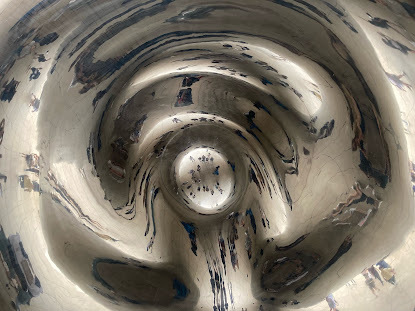
Somewhere in this image is my reflection.
My husband and I were in Chicago's Millennium Park, standing under the Bean –- an enormous stainless steel sculpture designed by Anish Kapoor. He named the piece Cloud Gate. But since it's shaped like a bean, that's what people call it. Perhaps he thought people would marvel at how it reflects the sky. Instead, everyone stands under the Bean in the omphalos to see how their image is warped by the concave chamber.
It's often said that books can be mirrors, windows, or doors. Stories provide a way we can see ourselves, see others, or enter a new world.
But what if the image we see is distorted? Seeing ourselves in a new way can be fun. We've all laughed at the fun house mirror's ability to stretch us or squish us. Seeing a distortion of ourselves can also be disturbing, especially if we don't know that the mirror has been bent.
As I reflect on reflections, I wonder if the mirror of fiction is always altered. A telescope uses a concave surface to gather light from a large area and bring it to a point the human eye can see. The best writers do something similar to help us peer more deeply into places we can't see.
JANE KELLEY is the author of many middle grade novels in which she twisted reality.
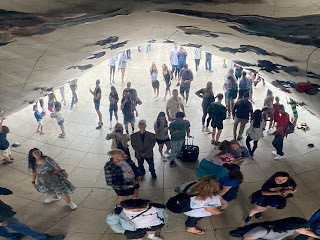
August 5, 2025
Interview with Victor Piñeiro, Author of The Island of Forgotten Gods
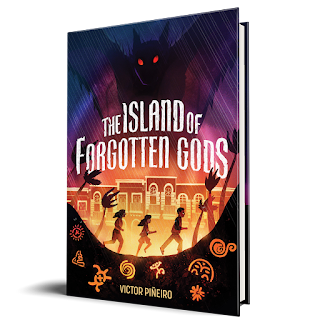
Welcome to SmackDab in the Middle, Victor! Please tell us a bit about The Island ofForgotten Gods.
Thanksfor having me! Sure thing. The Island of Forgotten Gods is acoming-of-age adventure set in Puerto Rico, where thirteen-year-old Nico—a New Yorker who dreamsof being the next Spielberg—plans to make a film so brilliant it’ll get himinto LaGuardia, his dream high school. But when he’s sent to spend the summerwith his Abuela and cousins in PR, his project takes a wild turn: he stumbleson the chupacabra, who begins hunting him down. Soon, he’s not just making amovie—he’s fighting for Puerto Rico’s survival against the ancient Taíno godswho created the island.
The Island of Forgotten Gods blends contemporarycoming-of-age with Puerto Rican mythology. What drew you to weave Taínomythology and culture into a modern story about a young filmmaker?
Thebook actually started its life as a memoir. I wrote the first draft during anespecially dreary pandemic winter, reliving my favorite childhood summer as away to cope with the gloom. The young filmmaker is an amalgam of my brother andI, who spent all of our time making movies since we were old enough to hold acamera. We made one of our wildest films in Puerto Rico the summer before Iturned thirteen.
Themythology aspect was a happy accident. It came in partway through the firstdraft as I was studying myths for a completely different project and stumbledon a unique link between the chupacabra and ancient Taíno myths. (More on thatsoon!)
The book has been praised as "a love letter to PuertoRico." Can you talk about your personal connection to the island and howyou approached representing both its magical elements and real-life struggles?
Iwas born in Puerto Rico, but my dad joined the Air Force soon after I was bornand we started moving all over the US when I was two. We always returned toPuerto Rico for the summers, though—it was our anchor.
AsI was reminiscing over our greatest childhood vacations in PR, I was broughtback to the summer when my brother and I started noticing the cracks underneaththe idyllic exterior of the island. Walmart had recently opened stores inPuerto Rico, and our town plazas became ghost towns, which ultimately got ourparents talking to us about colonization. It blew our young minds to find outthat our summer playground wasn’t all sunshine and beaches. And as we grewolder we started to better understand the complicated history of the island,and how much pain it’s gone through.
COVIDwas rough on Puerto Rico, given everything else the island had recently beenthrough (from Hurricane Maria to Zika to earthquakes and constant blackouts).Writing the first draft of my book in lockdown, I felt powerless and unable tohelp. I hoped that by bringing awareness to the many issues Puerto Rico hasfaced in the past decade, it might help in some way.
This is your thirdmiddle-grade novel after Time Villains and Monster Problems. What keeps drawingyou back to stories that blend fantasy with family dynamics?
Onthe one hand, I like my books to draw deeply from my life and experiences sothat they feel more authentic. On the other hand, I love stories with bigspeculative hooks, so I love taking my life experiences and then blowing themup by adding fantastical elements. I also like balancing epic moments withquieter, family-centric moments that are very relatable. Something I love aboutthe upper middle grade audience is that they’re often torn between being closewith their family and adventuring out on their own. I try to reflect thatdynamic in my books.
The chupacabraplays a central role in the story. What made you choose this particularcreature from Latin American folklore?
Iwas not a fan of the chupacabra growing up. It had a cheezy name (a comediancame up with it!) and it was portrayed so differently by everyone who saw itthat it seemed both fake and lame. Decades later I made two realizations thatchanged everything I thought I knew about the monster.
1.The chupacabra craze was a nineties phenomenon, but a very similar creature hadbeen spotted twenty years before it, and then again just seven years ago.Though they had different names, sightings generally described them asbat-like, or gargoyle-like.
2.The Taínos believed that the first humans emerged out of a cave as bat-likepeople, until their wings were burned off by the sun.
I’venever seen a connection made about the chupacabra and the creatures the Taínosbelieved we evolved from, and I thought it would be so fun to tie those twostrands together in an epic fantasy story.
Your career hasbeen incredibly diverse: working at HBO Max and YouTube to designing games forHasbro and teaching third grade. How do these varied experiences influence yourstorytelling?
I’vebeen fortunate enough to watch a variety of storytellers spin their tales– from kids to game designers to showrunners to YouTube creators – and Ilove taking it all in and applying it to my writing. Stories come in suchdifferent shapes and sizes, and I like trying to figure out why some storieswork better as short YouTube videos versus HBO Max shows versus a book I’d readto my third graders. But mostly, I just love being around creative people whowork in different mediums, as it’s incredibly inspiring.
The relationshipbetween Nico and his Abuela Luciana is pivotal to the story. Can you discussthe importance of intergenerational connections in your work?
SomethingI explore a lot in The Island of Forgotten Gods is the very real threatof gentrification to Puerto Rican culture, and nothing exemplifies the culturewe’re losing more than understanding what the island was like 50-80 years ago,through the eyes of abuelos y abuelas. I wanted my abuela to be one of the maincharacters because she was iconic and incredible, but I also wanted her to showoff the culture we’re at risk of losing as Puerto Ricans leave the island indroves and billionaires are incentivized to settle into it.
You've mentionedthat reading The Lion, the Witch and the Wardrobe in third grade sparked yourdesire to write. How do you hope your books might similarly inspire youngreaders?
Ihope this book inspires young readers to explore their homelands or familiesand see them through a new lens. But overall, I hope my books help motivatekids to create. Writing would be wonderful, but if my books push someone tocreate in any medium, I’d be happy. It’s harder and harder to push through thefirehose of passive entertainment we’re met with every minute of every day, andcreate something original. And when we create, then we’re in dialogue with eachother and the rest of the world. I think it’s going to get more and morechallenging to create art as technology begins doing a lot of the work for us.But there’s such a beauty and satisfaction that comes out of creating things.
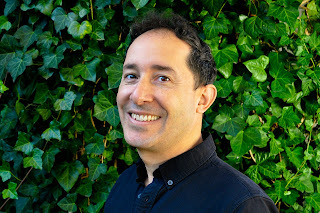
What’s next?
I’m working on anupper middle grade book that fuses my love of music with my love of fantasy.
Where can we find you?
Talkto me on Instagram @victorpineiro or head over to victorpineiro.com and dropme a line!
Snag a copy of The Island of Forgotten Gods
August 3, 2025
Reflection: A Writer's Journey by Irene Latham
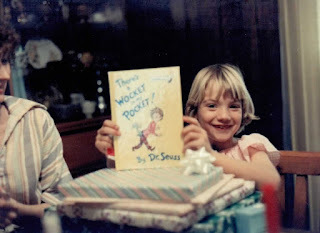 Lately I've been reflecting on my 50+ year writer's journey.
Lately I've been reflecting on my 50+ year writer's journey.I started writing when I was 4 or 5, and I can't recall a time in my life when writing wasn't somehow a part of it.
For the first 20ish years of my writing life, I kept my words private, stuffing papers into drawers and cabinets. I didn't even think of publishing.
Once I decided I wanted to find readers, it took a good decade for private-shy-introverted me to become comfortable with sharing my work.
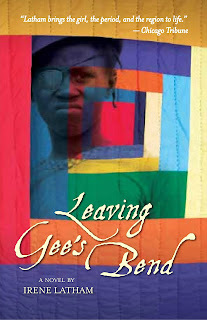 While I published poetry in literary magazines, contests, anthologies, and collections during that decade, it wasn't until my first novel for kids was published in 2010 that my "career" really took off. That one book changed my life in so many dramatic ways, not the least of which was launching me into the world of school visits and public speaking.
While I published poetry in literary magazines, contests, anthologies, and collections during that decade, it wasn't until my first novel for kids was published in 2010 that my "career" really took off. That one book changed my life in so many dramatic ways, not the least of which was launching me into the world of school visits and public speaking. The next decade was a whirlwind of writing, traveling, raising kids, school visits, book festivals, conferences...
And then 2020. Everything came to a screeching halt. I had 4 books releasing that year, and a full-to-bursting calendar...and BOOM. We all remember what that was like!
And you know what? It was a re-set for me, and exactly what I needed. A time to be more honest about my wants and wishes, a time to reflect on how I'd grown and changed and how I wanted to spend my precious time on this planet.
In the past five years I have stopped doing school visits and gotten off social media.
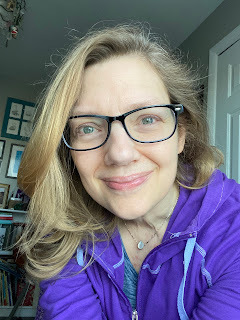 I have a meditation practice I love, and yoga! Cello! Tai Chi!
I have a meditation practice I love, and yoga! Cello! Tai Chi! I prioritize my family time over book events.
I only say YES to things I truly WANT to do. (I know! Shocking!) I ask these questions when making decision: Will it be fun? Does it move me toward my mission to be my most authentic self in the world?
And I've never been happier or more content.
I write what I love and only what I love. It's that simple...and yet it's taken me decades to reach this place. And next year I have 3 new picture books coming, and 2 of my backlist books will be released in paperback. (!)
Here'a a poem that kind of sums it up. Wherever you are on your writing journey, I wish you all the best!
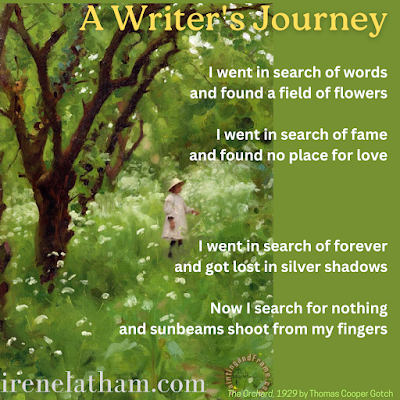
A Writer's Journey
by Irene Latham
I went in search of words
and found a field of flowers
I went in search of fame
and found no place for love
I went in search of forever
and got lost in silver shadows
Now I search for nothing
and sunbeams shoot from my fingers
August 2, 2025
Middle Grade Reading for August
I've interviewed some MG novelists on my blog, Book Q&As with Deborah Kalb, over the past month, and thought I'd share some of their comments...
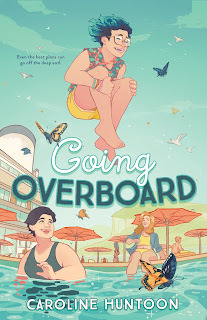 Caroline Huntoon is the author of the new novel Going Overboard. When I asked Huntoon about the inspiration for the novel, they said, "My parents got married when I was 16 -- but my brotherand stepsister were 10 and in the same class! There were five kids in thatequation, and my stepmother and dad had to work so hard to make the familywork." They added, "None of us actively tried to break them up (I don't think),but we definitely didn't always cooperate. I riffed on that idea -- but made itmuch gayer! Ultimately, my family is such a wonderful and important part of mylife now, it's hard to imagine life without them!"
Caroline Huntoon is the author of the new novel Going Overboard. When I asked Huntoon about the inspiration for the novel, they said, "My parents got married when I was 16 -- but my brotherand stepsister were 10 and in the same class! There were five kids in thatequation, and my stepmother and dad had to work so hard to make the familywork." They added, "None of us actively tried to break them up (I don't think),but we definitely didn't always cooperate. I riffed on that idea -- but made itmuch gayer! Ultimately, my family is such a wonderful and important part of mylife now, it's hard to imagine life without them!"
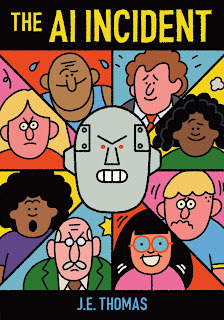 J.E. Thomas's novel is called The A.I. Incident. She said of the inspiration for the book, "AI is ubiquitous in conversation now. It's like the air. We hear that AI can do homework. AI can solve the teacher shortage. AI can level the playing field between well-resourced and under-resourced schools. AI can create (or steal) jobs. AI can write movies...and songs...and menus. AI can... AI can…" She added, "When I spoke with students while doing school visits for my debut novel, Control Freaks, AI was very much on their minds. When I said that I was working on a book about AI, the response was huge! Kids have so many opinions, so many thoughts, and so many questions about this technology. I enjoyed exploring a few of those in The AI Incident."
J.E. Thomas's novel is called The A.I. Incident. She said of the inspiration for the book, "AI is ubiquitous in conversation now. It's like the air. We hear that AI can do homework. AI can solve the teacher shortage. AI can level the playing field between well-resourced and under-resourced schools. AI can create (or steal) jobs. AI can write movies...and songs...and menus. AI can... AI can…" She added, "When I spoke with students while doing school visits for my debut novel, Control Freaks, AI was very much on their minds. When I said that I was working on a book about AI, the response was huge! Kids have so many opinions, so many thoughts, and so many questions about this technology. I enjoyed exploring a few of those in The AI Incident."
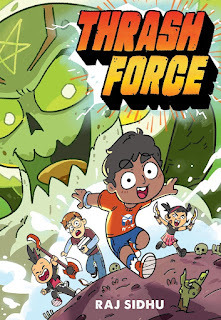 Finally, I interviewed Raj Sidhu about his novel Thrash Force. Asked about the inspiration for the story, he said, "I turned to the things that did bring me joy: the books and media of my youth (think Courage the Cowardly Dog, Powerpuff Girls, andCaptain Underpants), as well as the wacky, deeply-unserious D&D adventuresthat my friends and I were doing pre-pandemic." He added, "So there it was: the spirit of my favorite kids’ cartoonswrapped in a body constructed from RPG mechanics. I began to noodle around onthe page, and to my delight, the writing flowed. Within five or six pages, Iwas hooked: I was slinging puns, and putting these delightful characters I’ddiscovered up to all sorts of mischief."
Finally, I interviewed Raj Sidhu about his novel Thrash Force. Asked about the inspiration for the story, he said, "I turned to the things that did bring me joy: the books and media of my youth (think Courage the Cowardly Dog, Powerpuff Girls, andCaptain Underpants), as well as the wacky, deeply-unserious D&D adventuresthat my friends and I were doing pre-pandemic." He added, "So there it was: the spirit of my favorite kids’ cartoonswrapped in a body constructed from RPG mechanics. I began to noodle around onthe page, and to my delight, the writing flowed. Within five or six pages, Iwas hooked: I was slinging puns, and putting these delightful characters I’ddiscovered up to all sorts of mischief."Happy reading!
--Deborah Kalb



